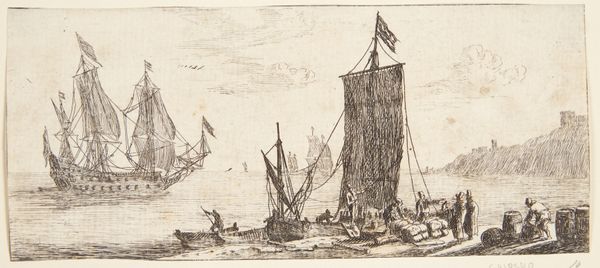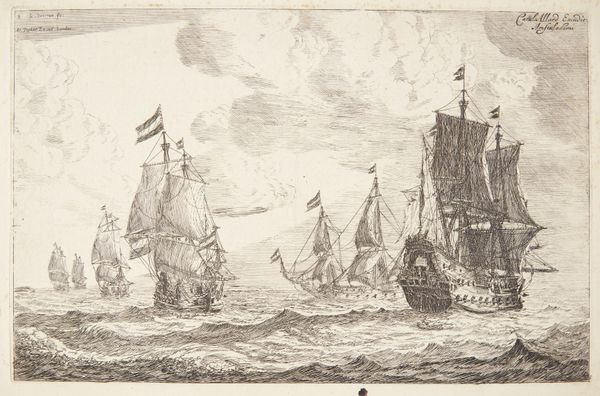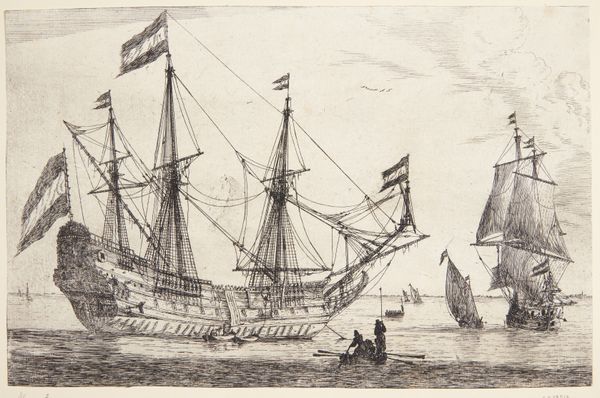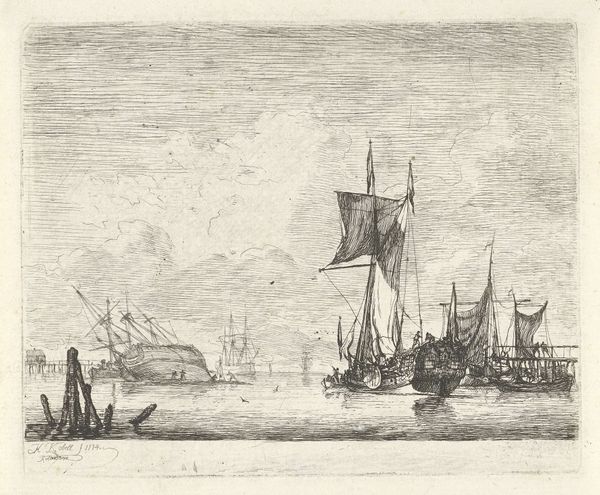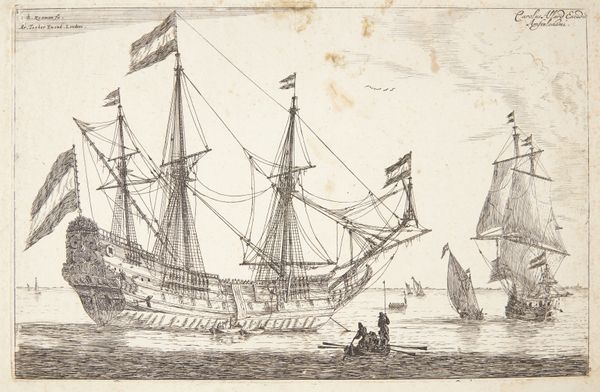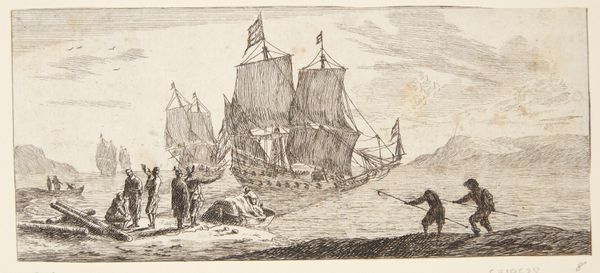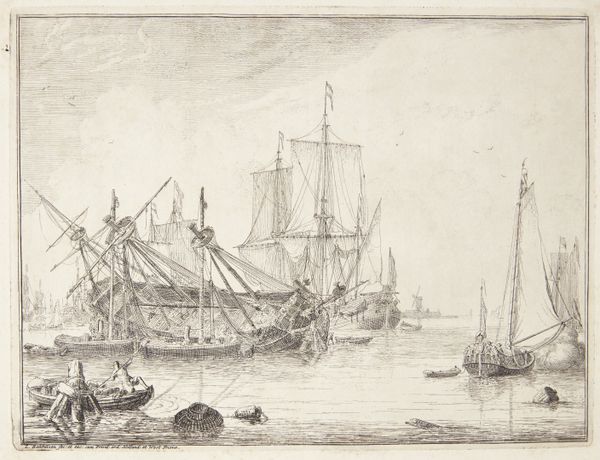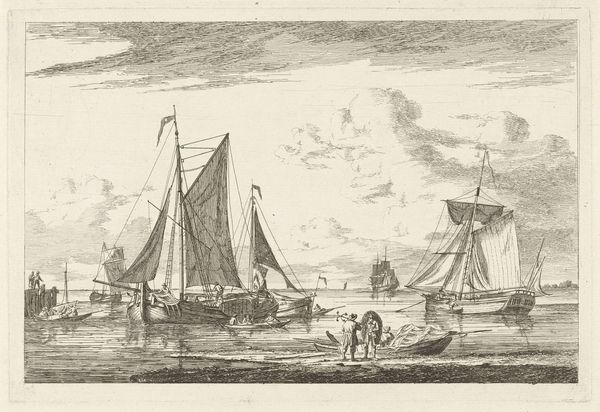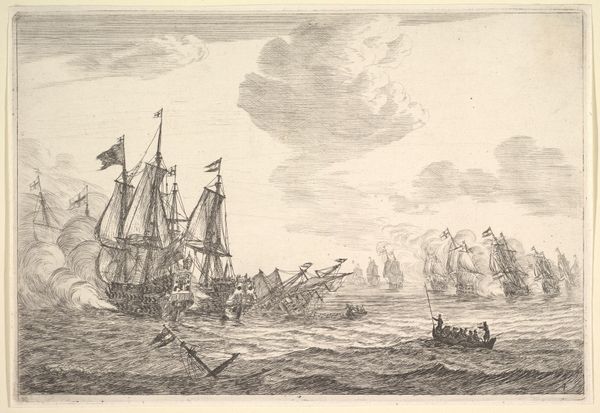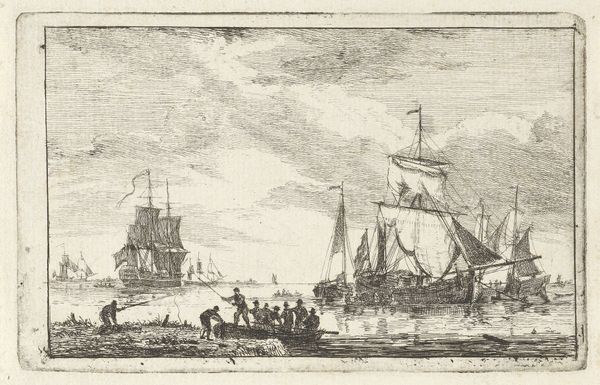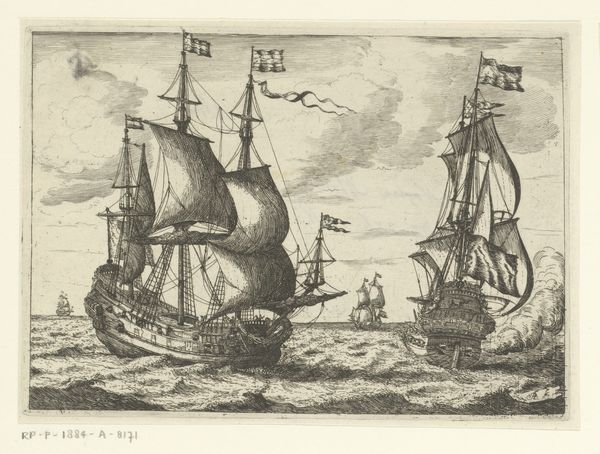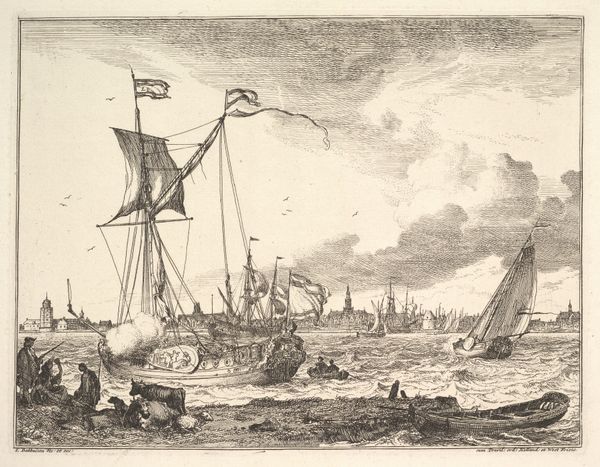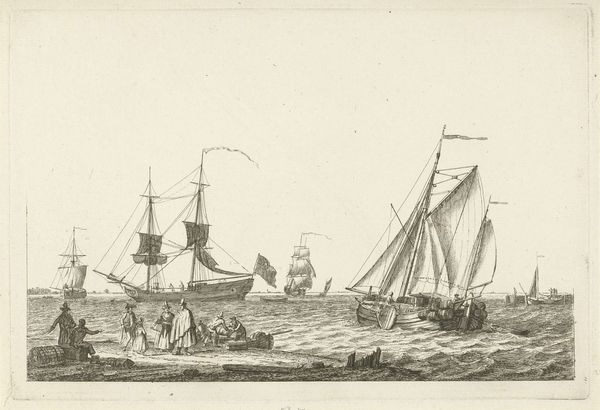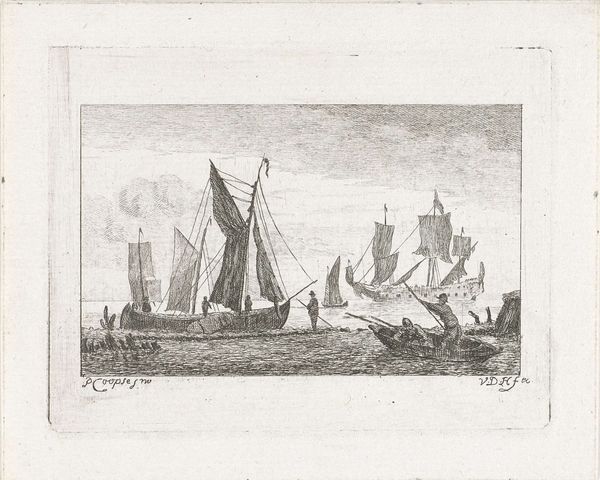
print, etching
#
dutch-golden-age
# print
#
etching
#
landscape
#
cityscape
Dimensions: 80 mm (height) x 180 mm (width) (plademaal)
Curator: Looking at this detailed etching, what immediately strikes you? Editor: There’s a muted tension. Despite the industrious activity by the harbor, the limited palette creates a stillness, an almost melancholic atmosphere. Curator: Indeed. This etching, titled "Bay with a Moored Trading Ship," was created between 1651 and 1652 by Reinier Nooms. The print exemplifies Dutch Golden Age artistry and a clear interest in maritime activity. Editor: Note the layering of labor here. There are men wading ashore from small vessels in the lower left and in the center others busy themselves transferring heavy bags onto the shore. Further in the background, though, are the ships: machines of labor as much as objects of commerce. I find it difficult to extract what these people’s lives may have been, though the print itself clearly showcases a strong economic drive that propelled that period. Curator: Certainly, Nooms himself began as a sailor. His first-hand experience enabled such details: the rigging of the vessels, the precise depiction of goods being unloaded—emphasizes the networks of exchange and labor embedded in this scene. The scale of this activity dwarfs the tiny rendition of what I assume is supposed to be a city perched atop a far hill, its fortifications reduced to quaint design. Editor: Scale is critical here. The print's small size juxtaposes with the immensity of the open sea. It evokes a sense of intimacy, but also emphasizes how these coastal activities connect to global economies. The composition, carefully structured by gradations of line, establishes these spatial and social relationships. It reads almost like a diagram for how the flow of things should be organized in the viewer’s own life. Curator: Perhaps, but to view the port workers laboring on the beach not as evidence of social connections, but instead as an attempt to diagram their role in this complex network. Nooms’s picture reveals both the process and product of that labor; here we see material realities driving production. Editor: That’s one interpretation! Regardless, the artwork allows us to explore complex issues and artistic interpretations, connecting form with content. Curator: I think it's valuable precisely for those insights into the tangible workings and networks underlying that particular moment in history.
Comments
No comments
Be the first to comment and join the conversation on the ultimate creative platform.
